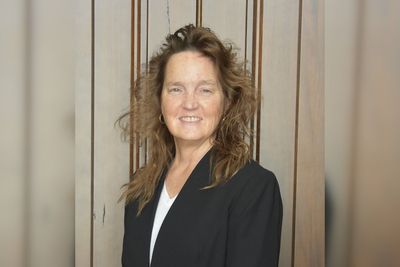Q&A
Houston founder on why geothermal is a 'cornerstone' tech for energy transition

In a Q&A with EnergyCapital, Cindy Taff of Sage Geosystems explains why she's so optimistic about geothermal and her company's technology. Photo courtesy of Sage
Geothermal energy is an integral part of decarbonizing the energy industry, and Sage Geosystems CEO Cindy Taff believes her company's tech has what it takes to lead the way.
Founded in Houston in 2020, Sage Geosystems is focused on two business lines — energy storage and geothermal. In addition to developing these technologies, Taff says Sage has "cracked the code" on both reducing costs and maximizing electricity output. Sage has customers ranging from Nabors, the world’s largest land-based drilling company, and Virya LLC, an investor in climate ventures with high impact of eliminating global greenhouse gas emissions or sequestering CO2
In a Q&A with EnergyCapital, she explains why she's so optimistic about geothermal and her company's technology.
EnergyCapital: Why do you believe geothermal has a major role to play in the energy transition?
Cindy Taff: Geothermal energy is not just a contender in the energy transition; it is a cornerstone. The question isn’t if we can drive down the costs to be competitive with wind, solar, and natural gas—it’s when. As renewable credits for solar and wind begin to expire, these industries will face the reality of their “real costs.”
As a 24/7 renewable energy source, it provides a constant and reliable power supply, unlike the intermittent nature of solar and wind. Moreover, the rising costs of lithium-ion batteries, driven by the increasing scarcity of lithium and cobalt, further underscore geothermal’s economic viability.
My extensive experience in both geothermal and the O&G sector is a testament to the synergistic relationship between these industries. The skills honed in O&G are not only transferable—they are essential to advancing geothermal technologies. In summary, the O&G industry can make a huge impact to geothermal by systematically driving down costs while scaling up, which is exactly what we did for unconventional shales.
EC: When it comes to finding partners or investors, what are you looking for? What should potential partners/investors know about Sage?
CT: Our technology is ready to scale today, not five to 10 years into the future. We will deliver our first energy storage power plant in 2024 and our first enhanced geothermal power plant in 2025. We are looking for synergies with investors, such as companies with power market or O&G expertise.
In addition, we seek to partner with others who have local content and relationships in places around the world to enable us to quickly and broadly scale our technologies. Sage's technologies are extremely flexible, in that we can deliver energy storage or enhanced geothermal to the utility grid or behind-the-meter to targeted commercial customers, including a dedicated microgrid (i.e., for the U.S. Air Force). Our technologies can provide electricity to remote locations such as mining operations or to large population centers such as Houston, and everything in between.
EC: What's the biggest challenge Sage is facing as an energy transition startup and how do you plan to tackle it?
CT: A common misunderstanding about Sage is that we only do energy storage or that we only do geothermal. However, we do both and the technologies build on one another. Essentially, our energy storage technologies will allow us to "walk" before we "run" with geothermal. On a related point, at this point in the energy transition, time to commercialization and affordability of new clean technology are the leading factors in terms of climate impact. As the first geothermal company to deliver a cost-effective commercial enhanced geothermal system, we are poised to truly make a meaningful difference.
EC: As a woman in a male-dominated industry tackling a global problem, what's been your biggest lesson learned? What's your advice to fellow energy tech female founders?
CT: In my journey as a woman in the energy tech industry, I’ve been fortunate to focus on the work and the global challenges we’re addressing, rather than on any gender-based obstacles. My biggest lesson learned is that innovation and leadership know no gender. Success is driven by perseverance, vision, and collaboration.
———
This conversation has been edited for brevity and clarity.